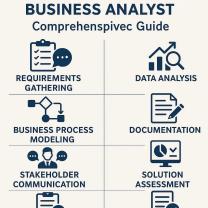What is adequate segregation of duties a conceptual model?
Adequate segregation of duties (SoD) is a fundamental concept in organizational management and internal control. It refers to the practice of dividing critical tasks and responsibilities among different individuals or departments to prevent conflicts of interest, errors, fraud, or misuse of power. A conceptual model for adequate segregation of duties involves several key principles:
1. Principle of Separation:
- The core idea is to divide duties in such a way that no single person or entity has complete control over a process from start to finish.
- Separation occurs horizontally (across different roles or positions) and vertically (within the hierarchy).
2. Types of Duties:
- Authorization: Granting approval or permission for actions or transactions.
- Recording: Documenting or entering data related to transactions.
- Custody: Physical control or possession of assets or resources.
3. Roles and Responsibilities:
- Identifying specific roles and responsibilities within the organization.
- Ensuring that conflicting duties (e.g., authorization and record-keeping) are assigned to different individuals or departments.
4. Risk Mitigation:
- Reducing the risk of fraud or errors by making collusion difficult.
- Minimizing the potential impact of mistakes or misconduct.
5. Compliance and Governance:
- Ensuring compliance with regulations and standards.
- Aligning segregation of duties practices with governance frameworks like COSO (Committee of Sponsoring Organizations of the Treadway Commission) or SOX (Sarbanes-Oxley Act).
6. Monitoring and Review:
- Regularly assessing and reviewing the segregation of duties model.
- Adapting to organizational changes or evolving risks.
7. Automation and Controls:
- Implementing automated controls to enforce segregation of duties.
- Using technology to restrict access based on roles and permissions.
Importance of Adequate SoD:
- Fraud Prevention: Prevents unauthorized activities or fraud by requiring collusion between multiple individuals for misconduct.
- Error Reduction: Minimizes errors by having multiple checks and balances in place.
- Compliance and Auditability: Helps in meeting regulatory requirements and facilitates auditing processes.
Limitations:
- Resource Constraints: Small organizations might struggle to implement robust segregation due to limited staff.
- Overhead and Complexity: Over-segregation can lead to inefficiencies and complexities in processes.
The conceptual model of adequate segregation of duties is about creating a balance between control and operational efficiency, ensuring that critical tasks are appropriately divided to maintain integrity, reliability, and security within an organization's operations.
Defining adequate segregation of duties (SOD) and its role in internal control systems
Segregation of duties (SOD) is a fundamental principle of internal control that aims to prevent fraud, errors, and unauthorized activities by dividing critical tasks among different individuals or departments. It ensures that no single person has complete control over a process, thereby reducing the risk of misuse or abuse of authority.
Adequate SOD involves carefully analyzing the responsibilities within an organization and identifying tasks that are critical for preventing fraud or errors. These tasks should be divided among different individuals or departments to ensure that no single person has the ability to initiate, authorize, or record transactions without proper authorization or oversight.
Implementing SOD principles to prevent fraud, errors, and unauthorized activities
Effectively implementing SOD principles involves a systematic approach that encompasses:
Identification of Critical Tasks: Identify key tasks that are critical for preventing fraud or errors. These tasks may include handling cash, authorizing transactions, approving invoices, maintaining accounting records, and initiating or recording financial transactions.
Task Segregation: Divide critical tasks among different individuals or departments to ensure that no single person has complete control over a process. This may involve separating authorization, approval, and recording responsibilities.
Authorization Controls: Establish clear authorization procedures to ensure that only authorized individuals can initiate, approve, or record transactions. This may involve verifying identities, implementing dual-control mechanisms, and using electronic workflows.
Reconciliation and Review: Implement regular reconciliation and review processes to identify discrepancies, errors, or unauthorized activities. This may involve comparing records, reviewing transactions, and conducting audits.
Monitoring and Reporting: Continuously monitor the effectiveness of SOD controls and address any identified weaknesses or vulnerabilities. This may involve analyzing activity logs, conducting risk assessments, and implementing corrective actions.
Developing a conceptual model for SOD based on organizational structure and risk assessment
Developing a conceptual model for SOD requires a thorough understanding of the organization's structure, operations, and risk profile. The model should:
Map Organizational Structure: Identify key departments, roles, and responsibilities within the organization.
Identify Critical Processes: Analyze business processes and identify processes that are critical for financial reporting, safeguarding assets, and adhering to regulatory requirements.
Assess Risks: Conduct a risk assessment to identify potential fraud or error risks associated with each critical process.
Design SOD Controls: Based on the risk assessment, design SOD controls to mitigate identified risks. This may involve task segregation, authorization controls, reconciliation procedures, and monitoring mechanisms.
Document and Implement: Document the SOD model and implement the designed controls through training, policy implementation, and monitoring procedures.













